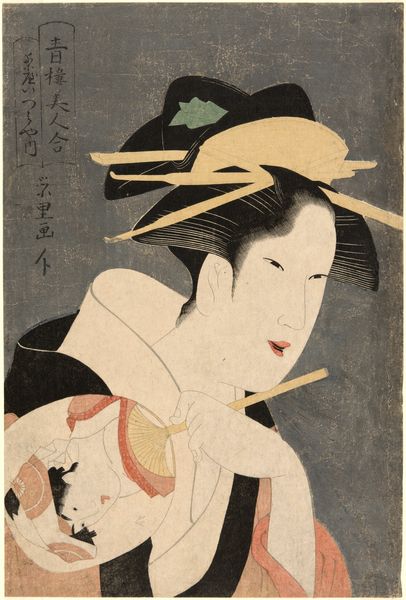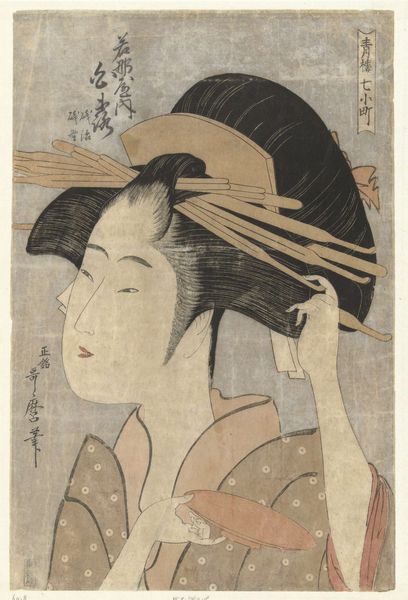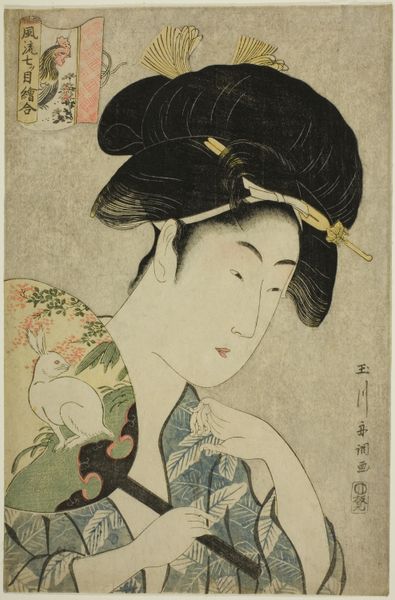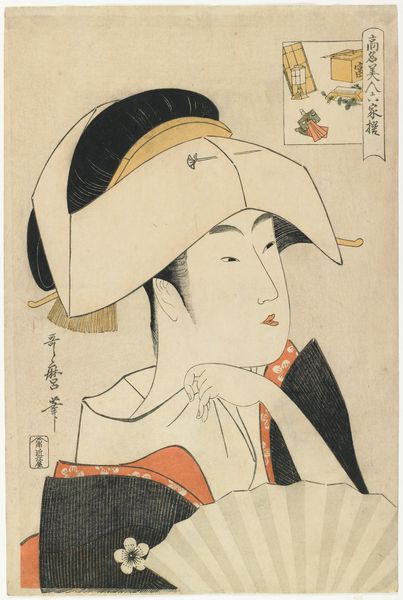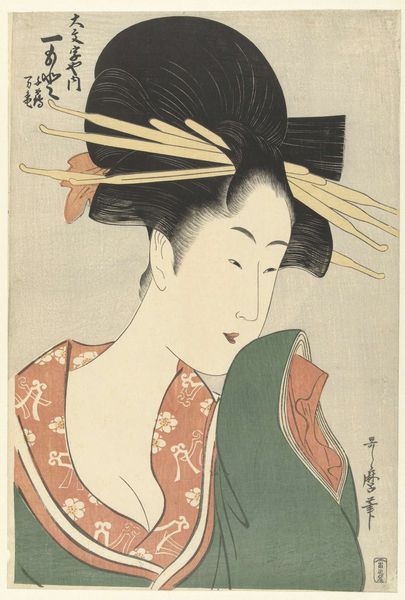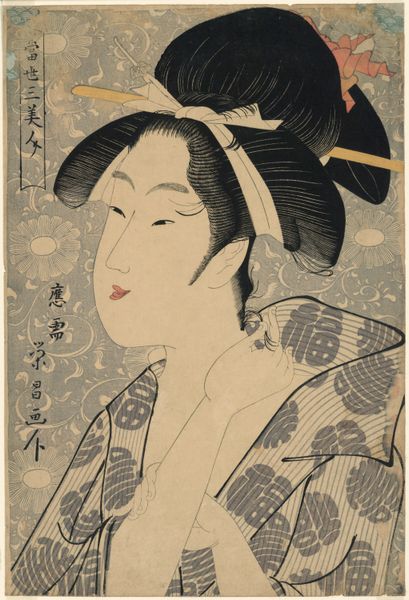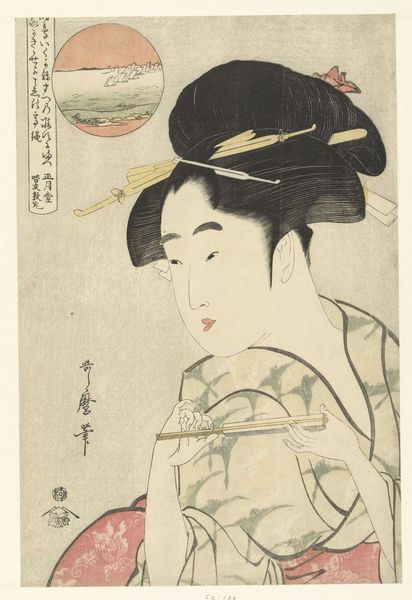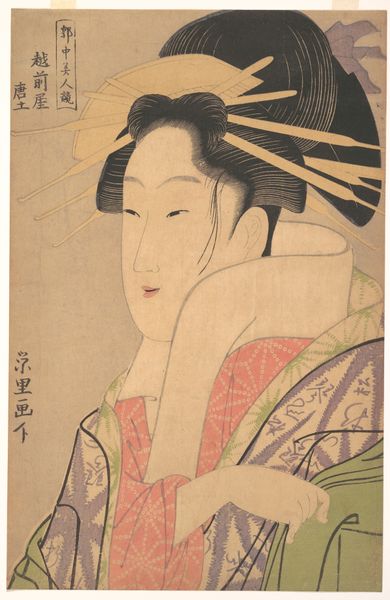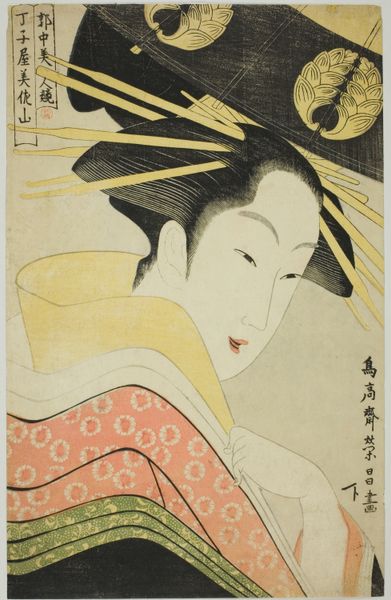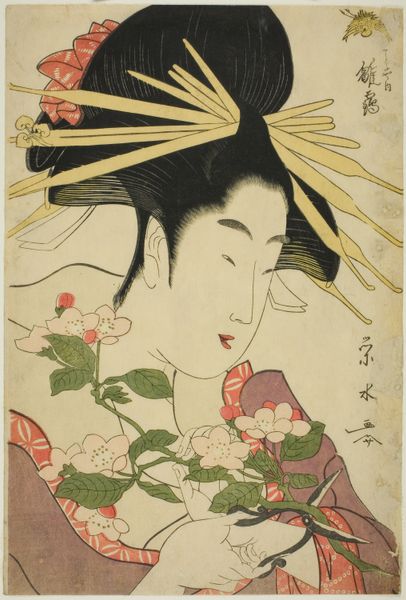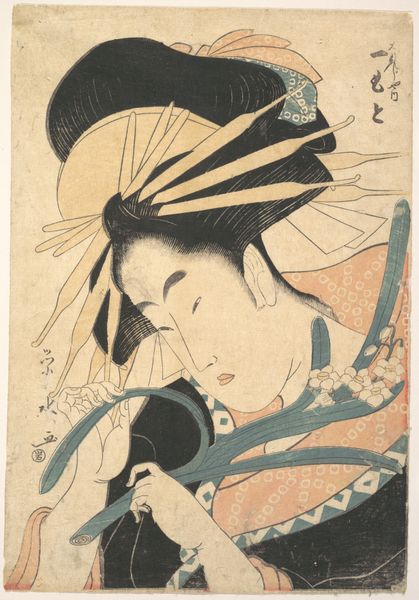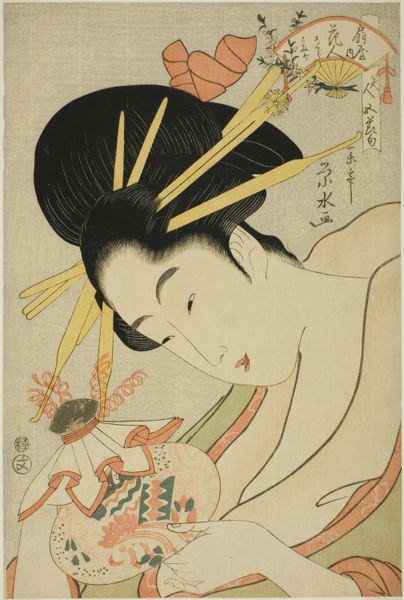
print, ink
#
portrait
# print
#
caricature
#
ukiyo-e
#
japan
#
figuration
#
ink
#
erotic-art
Dimensions: 14 11/16 × 9 3/4 in. (37.3 × 24.7 cm) (image, sheet, ōban)23 × 19 × 1 1/2 in. (58.42 × 48.26 × 3.81 cm) (outer frame)
Copyright: Public Domain
Editor: We're looking at "Prostitute Konosumi" by Kitagawa Utamaro, a print made around 1793-1794. It has a serene, almost melancholic feel to it. The lines are so delicate, especially in the woman’s hair ornaments, and her gaze is quite captivating. What strikes you most about this work? Curator: It’s intriguing to consider this ukiyo-e print in terms of production. Think of the woodblock carving required, the labour involved in creating multiple impressions. It moves beyond a simple portrait. The fan she holds depicting a landscape hints at trade and maritime networks fueling the economy in which courtesans like Konosumi occupied a specific, though often exploited, role. Were these images then simply pretty pictures, or active components within a much larger, commodity-driven world? Editor: That’s a perspective I hadn’t considered! So, you’re saying the material reality of its creation and the social context of its consumption are key to understanding its meaning? Curator: Precisely. And the choice of materials matters, too. Ink on paper – relatively inexpensive, allowing for wider distribution, impacting popularity, image, and desire. Consider how the print as a physical object intersects with class, commerce, and the construction of female identity. What do you make of that interplay? Editor: It’s like the print itself becomes a commodity representing the person. A copy of a copy. Fascinating. This reframes the artwork entirely. I originally perceived her to be pensive but maybe that emotion was being used to promote a consumable idea of beauty. Thank you! Curator: Exactly. Seeing art through its material conditions reveals so much more than just aesthetics. There is always more to learn about these subjects, particularly what role art may have had in this woman’s exploitation, or celebration.
Comments
minneapolisinstituteofart almost 2 years ago
⋮
Wearing luxurious tortoiseshell hairpins and a fancy comb, the woman depicted here is a prostitute. The fan held in front of her chest is embellished with a view of Shinagawa bay, where the pleasure quarter at which she works is located. The poem inscribed on the fan describes her reputation as a beauty of the bay area, which was nicknamed "the southern quarter" because it was located south of Edo castle. Beach landscapes, in general, were a popular subject for fan prints.
Join the conversation
Join millions of artists and users on Artera today and experience the ultimate creative platform.
